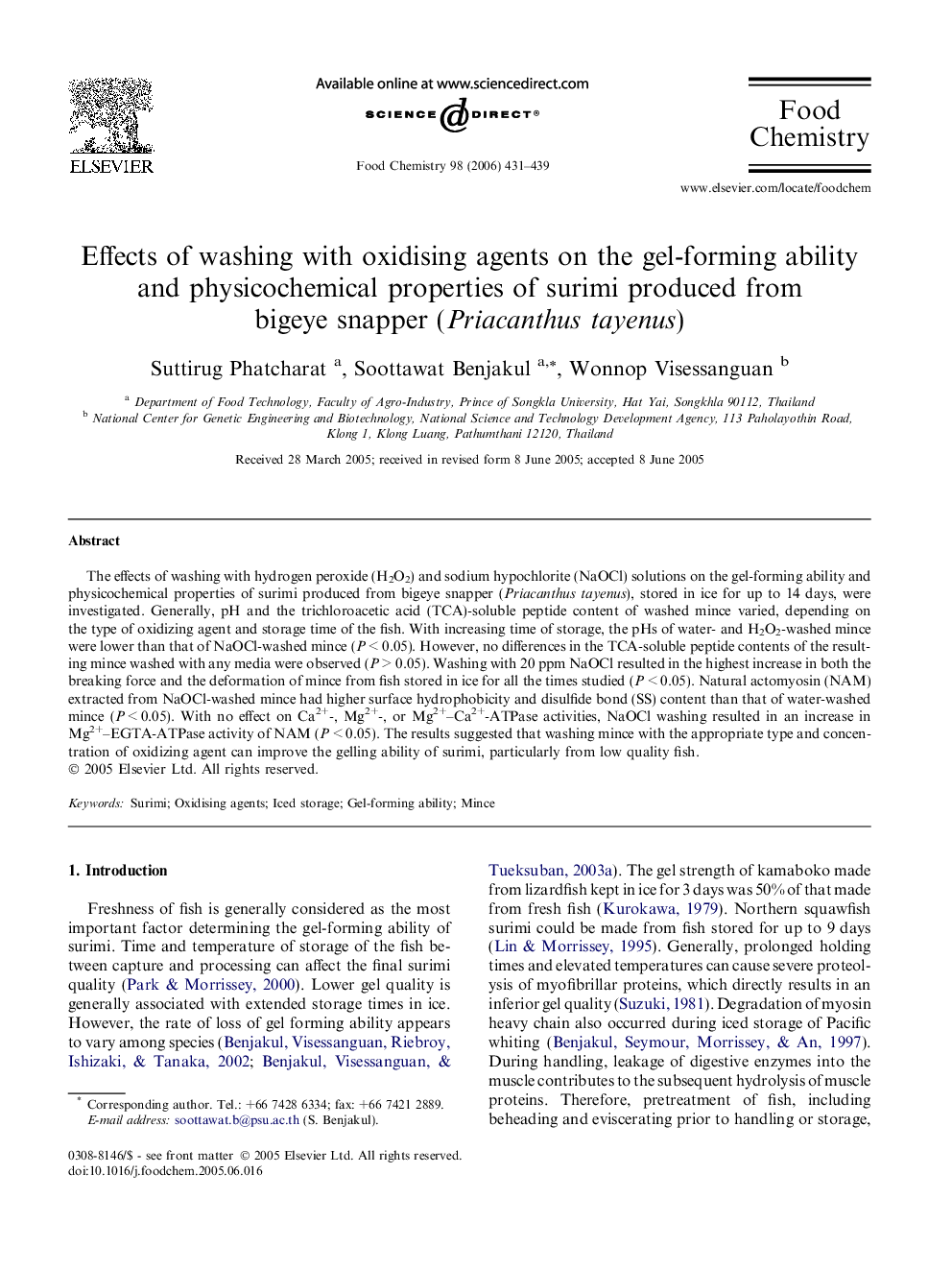| Article ID | Journal | Published Year | Pages | File Type |
|---|---|---|---|---|
| 1189151 | Food Chemistry | 2006 | 9 Pages |
The effects of washing with hydrogen peroxide (H2O2) and sodium hypochlorite (NaOCl) solutions on the gel-forming ability and physicochemical properties of surimi produced from bigeye snapper (Priacanthus tayenus), stored in ice for up to 14 days, were investigated. Generally, pH and the trichloroacetic acid (TCA)-soluble peptide content of washed mince varied, depending on the type of oxidizing agent and storage time of the fish. With increasing time of storage, the pHs of water- and H2O2-washed mince were lower than that of NaOCl-washed mince (P < 0.05). However, no differences in the TCA-soluble peptide contents of the resulting mince washed with any media were observed (P > 0.05). Washing with 20 ppm NaOCl resulted in the highest increase in both the breaking force and the deformation of mince from fish stored in ice for all the times studied (P < 0.05). Natural actomyosin (NAM) extracted from NaOCl-washed mince had higher surface hydrophobicity and disulfide bond (SS) content than that of water-washed mince (P < 0.05). With no effect on Ca2+-, Mg2+-, or Mg2+–Ca2+-ATPase activities, NaOCl washing resulted in an increase in Mg2+–EGTA-ATPase activity of NAM (P < 0.05). The results suggested that washing mince with the appropriate type and concentration of oxidizing agent can improve the gelling ability of surimi, particularly from low quality fish.
